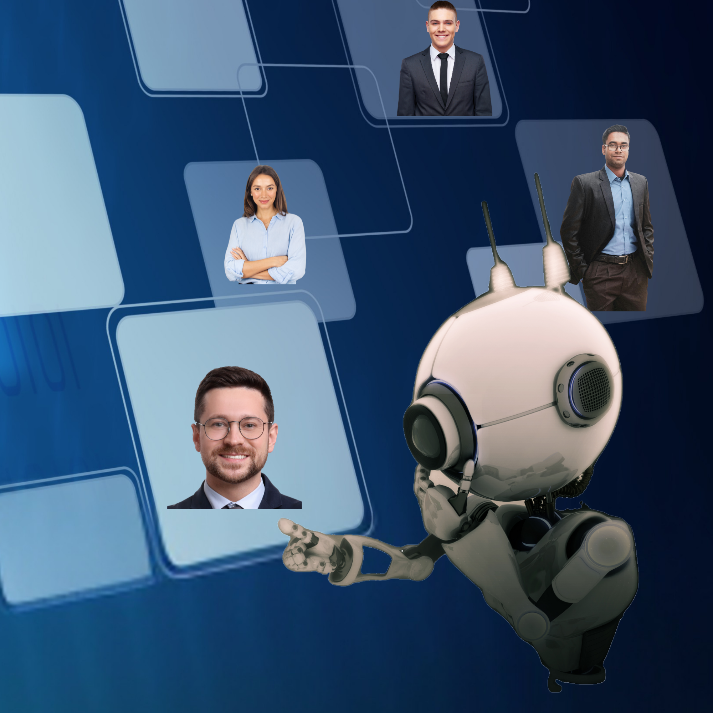The evolution of artificial intelligence is not a distant event on the horizon — it is unfolding now, and its impact on how organizations manage talent is unmistakable. While the early conversations around AI focused on automation and cost savings, we are now entering a more nuanced era — one that demands strategic clarity from employers and adaptability from job seekers.
AI isn’t just a tool; it’s a force reshaping organizational design, workforce planning, and the very definition of human work.
From Automation to Strategic Workforce Transformation
What began as a means to automate payroll or manage applicant tracking systems has expanded into a broader organizational capability. AI-driven insights are now assisting leadership in answering fundamental questions:
- Which roles are becoming obsolete?
- Where should we reinvest human capital?
- How do we reskill the workforce without eroding morale?
These questions no longer belong just to HR; they belong at the boardroom table.
Modern AI solutions are capable of modeling future talent needs by interpreting business strategy, market trends, and operational data. This foresight empowers organizations to transition from reactive hiring to proactive capability building — often years ahead of demand.
The Displacement Debate: A Balanced Perspective
Yes, AI has begun replacing routine, transactional roles — especially in HR operations, administration, and basic support services. But the narrative must not stop there.
Redundancy in certain roles does not equate to a net loss in employment. In many organizations, roles eliminated through automation are being counterbalanced by investments in software engineering, digital sales, cybersecurity, learning and development, and data-driven functions.
The underlying shift is this: AI does not simply remove work — it redefines it. Tasks are redistributed, and expectations recalibrated.
For employers, this means managing transitions with sensitivity and planning. For employees, it demands the courage to adapt, retool, and engage with lifelong learning.
AI as an Enabler of Human Potential — Not a Replacement

Executives and HR leaders must internalize a deeper truth: the most profound value of AI lies not in replacement but in enhancement. By offloading repetitive processes, organizations free up human capacity for what machines still cannot replicate—judgment, creativity, empathy, negotiation, and leadership.
AI is already supporting:
- Real-time coaching for managers during performance reviews
- Behavioral analytics to detect disengagement before it becomes attrition
- Bias mitigation in hiring by reviewing large datasets with neutral precision
- Personalized employee learning pathways
- Culture mapping based on internal sentiment trends
These are not mere productivity hacks; they are enablers of a better, more human workplace — if used wisely.
The Employer’s Dilemma: Technology Without a People Strategy is Risky
Leaders embracing AI must do more than roll out tools — they must rearchitect their talent strategies. That means:
- Building change management plans alongside tech rollouts
- Prioritizing reskilling programs — not as charity, but as business continuity
- Ensuring transparency and ethical guardrails around data and automation
- Engaging employees in dialogue, not just implementation
Technology decisions must be matched with human leadership. Otherwise, the cost won’t just be jobs — it will be trust, engagement, and innovation.
A Word to Job Seekers: Relevance is a Moving Target
For professionals navigating this shift, one thing is clear: relevance is no longer static. Your job title is less important than your capacity to learn, evolve, and collaborate with both people and systems.
The most sought-after employees of tomorrow will blend:
- Digital literacy: fluency in tools, data, and basic AI frameworks
- Human-centered strengths: communication, leadership, critical thinking
- Learning agility: the ability to absorb and apply new concepts rapidly
- Cross-functionality: the ability to operate across departments and disciplines
This is not the end of human work — it’s the end of complacency in work.
In Closing: Human Resources Must Lead, Not Follow
The future of work is being written today, not in theory, but in decisions made by organizations about how they value their people and how they integrate intelligence — both artificial and human.
AI, if implemented thoughtfully, offers a rare opportunity to elevate HR from a support function to a strategic core. It offers employers the chance to build more intelligent organizations — not just in process, but in purpose.
The responsibility now lies in how we wield that intelligence.
References & Influences:
- McKinsey Global Institute – The Future of Work in the Age of AI
- World Economic Forum – Jobs of Tomorrow Report
- Deloitte Insights – Human Capital Trends
- Harvard Business Review – AI’s Impact on Organizational Culture
- Various organizational case studies and real-world AI implementations in enterprise HR

